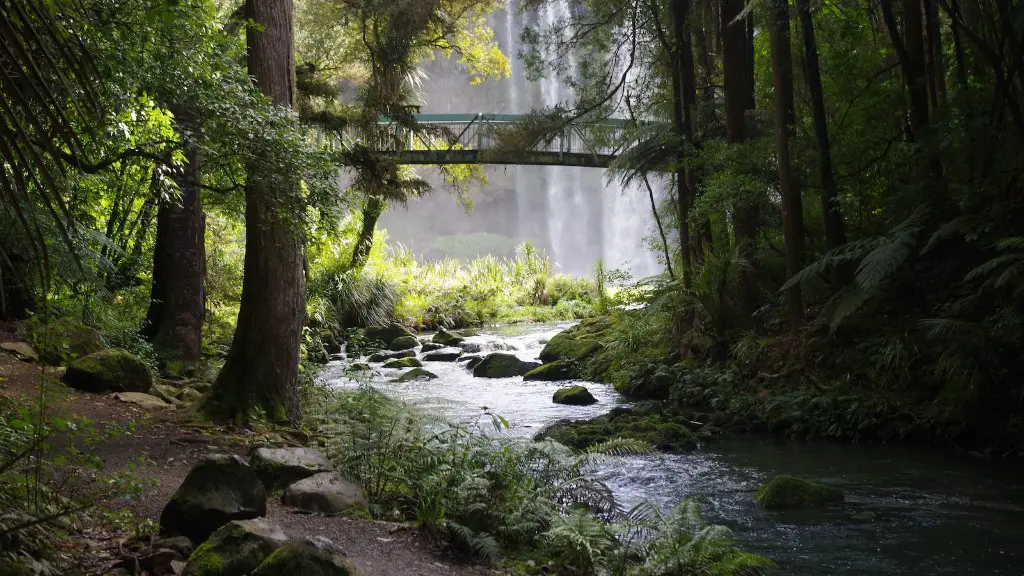Overview
The Nile River runs thousands of miles through desert and ancient civilizations in Egypt, Sudan, and Ethiopia. It is regarded as the longest river on Earth, with a length of 4132 miles, and prominent parts of the river cut through Egypt’s Sahara Desert. The river provides freshwater to millions of people in areas where it is scarce and is considered to have a significant impact on Egypt’s weather patterns, making it a reliable source of water for local communities.
Hydrology of the Nile
The Nile consists of two main tributaries which meet in central Sudan. The Blue Nile originates in the highland areas of Ethiopia, while the White Nile forms a network of seasonal rivers, originating from Lake Victoria in Uganda and running north to Sudan and central Egypt. The two tributaries meet just south of Khartoum, the capital of Sudan, forming the Nile and advancing towards Cairo. Due to the differences in the hydrological cycle, part of the White Nile does not flow through desert and only the upper part of the Blue Nile traverses the desert.
Economic Impacts
The Nile River has provided economic opportunities to generations of people living in Egypt and the surrounding areas. By creating fertile lands in the desert, the Nile serves as the basis for the cultivation of crops, and the river’s waters are used for irrigation, hydropower production, and fishing. In addition, flooding can help to reduce the risk of drought in an area, thus allowing for reliable agricultural production.
The river also provides transportation links and has become a major destination for tourist activities, such as cruises and sightseeing. Opportunities have also arisen in the construction of man-made reservoirs and other infrastructural projects and the provision of transport hubs in desert regions.
Environmental Implications
The Nile River has experienced a significant amount of human intervention in recent years due to population growth, leading to ecological changes in the river’s course. In particular, the introduction of dams across the river has led to the reduction of sediments that are necessary for agriculture and has had a negative impact on fish populations. In addition, these interventions can create difficulties for local communities in terms of access to water, sanitation, and food security.
The Nile also has global environmental implications, as the river’s water is shared by nine countries in the region. Major dams built upstream could threaten the water flow in the middle and lower sections of the river, thus creating ecological difficulties for downstream populations.
Conclusion
The Nile River is a vital source of freshwater for many countries in Africa and the Middle East, and it plays an important role in the economic and environmental well-being of these regions. The impacts of human intervention in the river must be carefully considered in order to ensure that future generations will be able to benefit from its waters.
Cultural Impact
The Nile River is a key element of Egyptian and Sudanese culture, with communities relying on its waters for centuries. It is seen as a religious symbol in both countries, with many cultural festivals taking place along the river’s banks. The Nile’s annual flooding was considered to be a blessing from the gods, responsible for the prosperity of the whole region.
Today, the river continues to shape cultural practices in the region, with many local communities still living on its banks and relying on it for sustenance. It is also seen as a symbol of national sovereignty in Egypt and elsewhere, as the river crosses through multiple countries in the region.
Agricultural Use
The Nile River is used extensively in agriculture throughout Egypt, Sudan, and Ethiopia. Its waters provide both organic and inorganic nutrients to farmers, allowing for an increased quality and quantity of crop yields. Floods also serve as a natural fertilizer, providing vital nutrients to crops along the way.
The river is also used as a source of irrigation, with many areas utilizing canals and pipelines to transport water to farms. This helps to offset seasonal variation in crop production, ensuring reliable yields and food security throughout the year.
Political Impact
The Nile River has served as a political boundary between countries in the region for centuries, with disputes over its waters occasionally erupting into conflict. This has been particularly true in recent years, with tensions between Egypt and Ethiopia over the building of a dam on the Blue Nile, and between Sudan and Egypt over the share of Nile waters.
Egypt, as the most downstream country on the Nile, has long argued for its rights to the river and has sought to control upstream activities. This has caused difficulties, as upstream countries have seen this as a form of domination and have sought to maintain their access to the river.
Impact on Wildlife
The Nile River is home to a variety of wildlife species, providing a habitat for many birds, fish, and mammals. In particular, the river provides a breeding ground for several varieties of fish, including the Nile perch, catfish, and tilapia. The river is also home to numerous species of birds, such as herons, pelicans, and kingfishers.
The river’s wildlife population has decreased in recent years due to various factors, such as pollution, overfishing, and the introduction of alien species. Furthermore, human interventions in the river, such as dams and the building of artificial lakes, have detrimental impacts on these species, as they prevent migration and destroy habitats.


